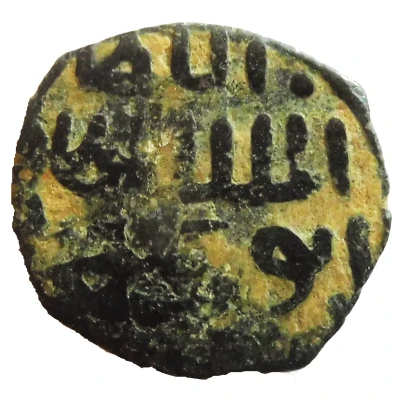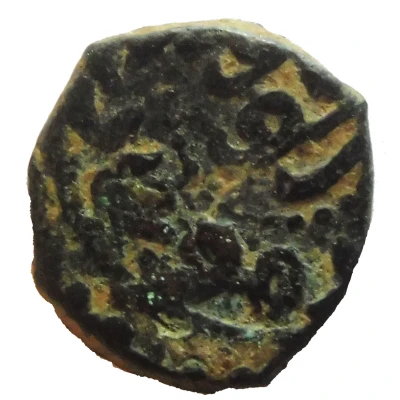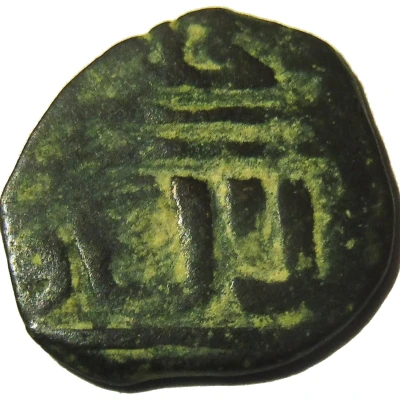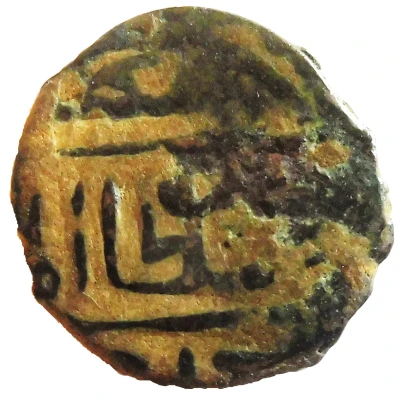
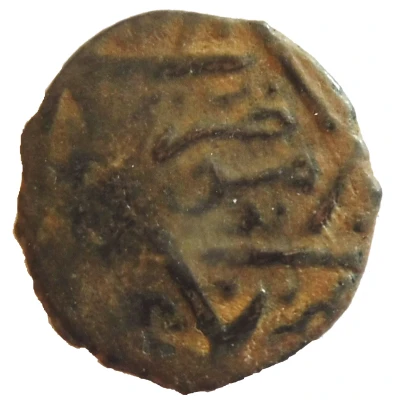

© Cycnos (CC BY-NC)
Fals - Salah-ad-Din Hajji II Dimashq
| Copper | 3.1 g | 18 mm |
| Issuer | Mamluk Sultanate |
|---|---|
| Sultan | Hajji II (1381-1382, 1389-1390) |
| Type | Standard circulation coin |
| Years | 791-792 (1389-1390) |
| Calendar | Islamic (Hijri) |
| Value | 1 Fals (1⁄60) |
| Currency | Dinar (1250-1517) |
| Composition | Copper |
| Weight | 3.1 g |
| Diameter | 18 mm |
| Shape | Round (irregular) |
| Technique | Hammered |
| Demonetized | Yes |
| Updated | 2024-10-05 |
| Numista | N#142749 |
|---|---|
| Rarity index | 90% |
Reverse
Inscriptions on four lines presenting the name of the workshop, in a hexagram formed by two intertwined triangles, heads spades, and inscribed in the same circle; presence of a globule inside each end of the star.
Registration starting at 1h and including the date in letters divided between the fields between the hexagram and the circle.
Lettering:
ب
ضر
مشق
بد
a) في|سنة|احدو|تسعين|وسبعما|ية
b) في|سنة|اثنينو|تسعين|وسبعما|ية
Translation:
Duriba
bi Dimashq:
"Struck in Damascus".
Fi sanat ihda (a) / ithnatain (b) wa ti'sin wa sebmi'at:
a) "In the year seven hundred and ninety-one [of the Hegira]".
(b) "In the year seven hundred and ninety-two [of the Hegira]".
Comment
First reign (1382) last ruler of the Bahri dynastySecond reign (1389-1390) ruler of the Burji dynasty
Interesting fact
One interesting fact about this coin is that it was issued during the reign of Sultan Salah-ad-Din Hajji II, who was a powerful ruler of the Mamluk Sultanate, a medieval Islamic state that spanned parts of Egypt, Syria, and Palestine. The coin's design features the name of the sultan and the date of issue, which was 791-792 AH (1389-1390 AD). Despite being made of copper, a relatively inexpensive metal, the coin was still carefully crafted and bears intricate details, showcasing the skill of the mint workers who produced it.
